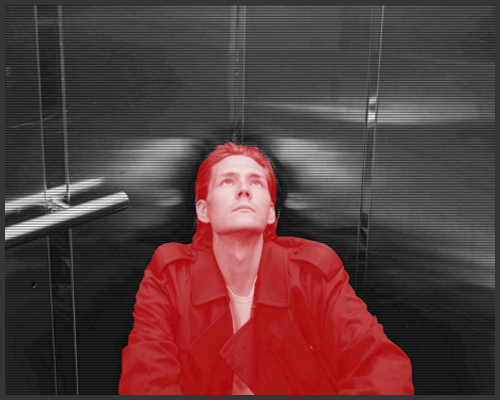Potential jurors got stuck in an elevator in 1986, preparing for a lawsuit against what company?
Don't scroll down until you've answered!

Duh! is a weekly column that gives circuitous answers to obvious questions. If you dig it, you can find 100 more of these essays in the Geeks Who Drink book, Duh!.
To get it out of the way:
- Yes, it was a lawsuit involving Otis Elevator Co.
- Yes, the courthouse elevator in question was an Otis elevator.
- Yes, the judge got assurances from all the potential jurors that they could still decide the case impartially.1
In fact, that’s just about all we know about the case, except that it involved a Michigan woman who broke her nose falling on an escalator at a Walt Disney World hotel (Disney and Otis were co-defendants). We googled for several minutes to try and figure out the outcome of the case, but in true Duh! fashion, this column was already going to be about something else, so we’ll all have to live with not knowing… unless someone else wants to google for several more minutes and tell us in the comments!
When London held the first World’s Fair in 1851, at a literal crystal palace in Hyde Park, Americans took notice. Two years later, in New York’s Bryant Park – today home to an outdoor crossword tournament, among surely many other things – they put on a sort of knock-off version called “Exhibition of the Industries of All Nations,” hosted inside another purpose-built crystal palace. What better way to show the Europeans that our young country could innovate on its own? Ahem.
For something dedicated to “industries,” the exhibition did not have an especially hardscrabble theme. As Prairie Farmer magazine put it, it was “a school of wealth and luxury—of taste and refinement—rather than hard-handed utility.” A Louis XIV-style sofa had birds, cherubs, and naked people carved into its woodwork. A Nunns & Clark piano had inlaid mother-of-pearl, abalone, and tortoiseshell on the lid. One ad for a shawl used the phrases “ornate grandeur,” “sumptuous character,” “dignified aspect,” “exquisitely wrought,” and “heaviest taffeta,” all in a single paragraph.2
It wasn’t until after the fair, in 1854, that inveterate tinkerer Elisha Otis showed up. Born in 1811, he had spent much of his career manufacturing bed frames, inventing labor-saving machines at every stop along the way. While working in Yonkers, he came up with the “safety hoist,” a manually-operated freight elevator with a brake to stop its fall if the rope broke.
Figuring the safety hoist had a future as its own product, he left the bed-frame business and set up shop, selling his first elevator in September 1853. But sales weren’t doing much beyond that, so the next spring he booked the Crystal Palace for a demonstration, personally riding his platform high into the air before ordering the rope cut.3 To judge from the news sketch of the day, the effect was impressive:
Of course, there are other ways to know the demo went well: The company bearing his name is still operating, and drawing lawsuits, to this day.
- According to the Orlando Sentinel, the jurors were “barely grumbling” during their 20-minute delay. Presumably they were psyched about the cool story they could tell at parties forever.
- We normally don’t use these footnotes for useful stuff, but a heck of a lot of this info – including pretty much everything in the footnoted paragraph – comes from the digital catalog for Bard Graduate Center’s 2017 exhibition on the … um, exhibition. Check it out if, like me, you’re into 19th-century frippery.
- In a savvy move, he hired P.T. Barnum as his hype man for the event. Barnum’s profoundly problematic publicity and variety-show career had already been going for nearly 20 years, but this was nearly 20 years again before he entered the circus business he’s best known for today.
